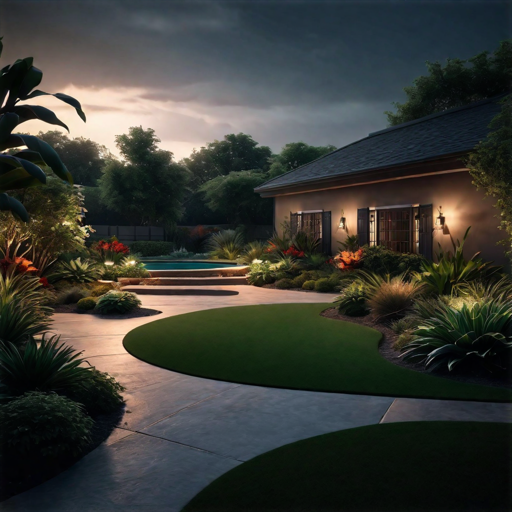Paver Work
An interlocking concrete paver is a pre-cast piece of concrete or brick commonly used in exterior hardscaping applications. Developed in Europe and introduced into the United States in the early 1970s, interlocking concrete paving stones offer an alternative to plain concrete or asphalt. Installed over a compacted stone sub-base and a leveling bed of sand, concrete paving stones can be used for walkways, patios, pool decks and driveways and airport or loading docks. Pressing the dry concrete-mix into moulds rather than pouring a wetter mix allows for their 8000 psi compressive strength, making concrete paving stones a more durable choice than clay bricks or poured-in-place concrete. Clay pavers have an advantage with resistance to fading from the sun and deterioration from long term exposure to the elements. They also do not require a seal coat to prevent staining, unlike the concrete paver.
Instead of connecting the pavers by pouring grout between the joints, as one would with tiles, sand particles are spread over the pavers and tamped down. The sand stabilizes the interlocking pavers, yet allows for some flexibility. In other words, this type of pavement will absorb stress such as small earthquakes, freezes and thaws, and slight ground erosion by shifting each tile slightly. Therefore, they will not crack or buckle like concrete. Brick paving being laid on a sand base, in south west England The mere special tools needed for installing interlocking pavers are vibrating compaction machine or “Vibra Plate” and Shear Cutter. The former is used to compact the base material to 90% density minimum and also to set and interlock the pavers into the sand bed. The latter is used to cut the pieces to fit at corners and edges. The sand does not easily wash out with rain or garden hose water and a sealer can be spread on to further lock the sand.
Characteristics and advantages of pavers:
- Paving Stones Increase Property Value
- Pavers Are 4x Stronger Than Concrete
- Paving Stones Are Earthquake Resistant
- Paving Stones Are Cheaper To Repair
- Better Weight Distribution
- Stones Have Elegance and Beauty
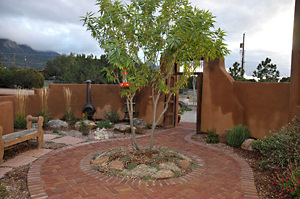
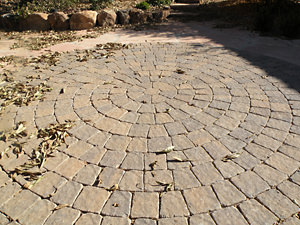
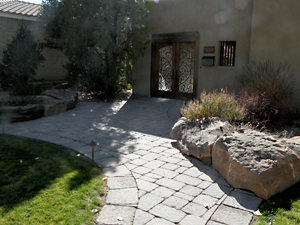
Irrigation Work
Irrigation is an artificial application of water to the soil. It is used to assist in the growing of agricultural crops, maintenance of landscapes, and revegetation of disturbed soils in dry areas and during periods of inadequate rainfall.
Drip irrigation, also known as trickle irrigation, functions as its name suggests. Water is delivered at or near the root zone of plants, drop by drop. This method can be the most water-efficient method of irrigation, if managed properly, since evaporation and runoff are minimized.[citation needed] In modern agriculture, drip irrigation is often combined with plastic mulch, further reducing evaporation, and is also the means of delivery of fertilizer.
In sprinkler or overhead irrigation, water is piped to one or more central locations within the field and distributed by overhead high-pressure sprinklers or guns. A system utilizing sprinklers, sprays, or guns mounted overhead on permanently installed risers is often referred to as a solid-set irrigation system. Higher pressure sprinklers that rotate are called rotors and are driven by a ball drive, gear drive, or impact mechanism. Rotors can be designed to rotate in a full or partial circle. Guns are similar to rotors, except that they generally operate at very high pressures of 40 to 130 lbf/in² (275 to 900 kPa) and flows of 50 to 1200 US gal/min (3 to 76 L/s), usually with nozzle diameters in the range of 0.5 to 1.9 inches (10 to 50 mm).
Most irrigation systems are divided into zones. A zone is a single irrigation valve and one or a group of drippers or sprinklers that are connected by pipes or tubes. Irrigation systems are divided into zones because there is usually not enough pressure and available flow to run sprinklers for an entire yard or sports field at once. Each zone has a solenoid valve on it that is controlled via wire by an irrigation controller. The irrigation controller is either a mechanical (now the “dinosaur” type) or electrical device that signals a zone to turn on at a specific time and keeps it on for a specified amount of time.
When a zone comes on, the water flows through the lateral lines and ultimately ends up at the irrigation emitter (drip) or sprinkler heads. Many sprinklers have pipe thread inlets on the bottom of them which allows a fitting and the pipe to be attached to them. The sprinklers are usually installed with the top of the head flush with the ground surface. When the water is pressurized, the head will pop up out of the ground and water the desired area until the valve closes and shuts off that zone. Once there is no more water pressure in the lateral line, the sprinkler head will retract back into the ground. Emitters are generally laid on the soil surface or buried a few inches to reduce evaporation losses.
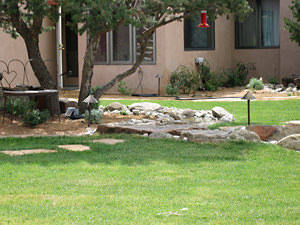
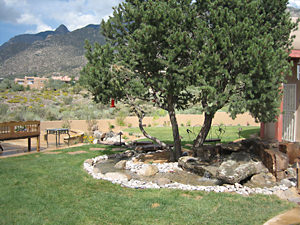
Flagstone Work
Flagstone, or flag, is a type of flat stone, usually used for paving slabs, but also for making fences or roofing. It may also be used for making memorials or headstones in a cemetery. It also refers to Pennsylvania Bluestone, a stone from northeastern Pennsylvania and the southern tier of New York. The name derives from Middle English flagge or turf, perhaps from Old Norse flaga or slab.
Flagstone is a sedimentary rock that is cut or split in layers for walkways and patios. It has a mineral composition of quartz and up to 15% Muscovite Mica, which gives it its bluish hue. Flagstone is form of a sandstone, which means it composes of up to 50% quartz and is arenaceous in grain size (1/16th – 2mm in diameter). The material that binds flagstone is usually composed of silica, calcium, or iron oxide. The color of the rock usually comes from the cementing material. Typical colors of flagstone are red, blue, buff, and there are exotic colors, such as chocolate. It is often used for patios, walkways, steps, fences, housing, fireplaces, and many construction projects.
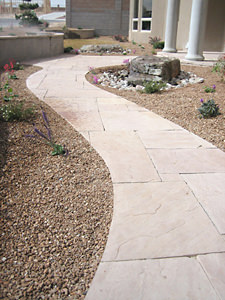
Lawn Work
A lawn is an area of aesthetic and recreational land planted with grasses or other low durable plants, which usually are maintained at a lower and consistent height. Low ornamental meadows in natural landscaping styles are a contemporary option of a lawn. In recreational contexts, the specialised names turf, pitch, field or green may be used, depending on the sport and the continent.
Lawns are a common feature of private gardens and public landscapes and parks in many parts of the world now. Lawns are created for aesthetic pleasure as well as for sports or other outdoor recreational use. Lawns are useful as a playing surface both because they mitigate erosion and dust generated by intensive foot traffic.
Many different species of grass are used, depending on the intended use and the climate. Coarse grasses are used where active sports are played, and finer grasses for ornamental lawns looked upon. Some grasses adapted to oceanic climates with cooler summers, and others to tropical and continental climates with hotter summers. Often a mix grass or low plant types is used to form a stronger lawn when one type does better in the warmer seasons and the other in the colder ones.
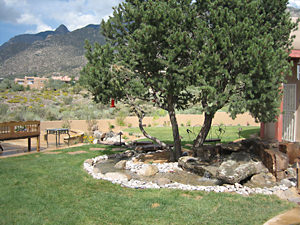
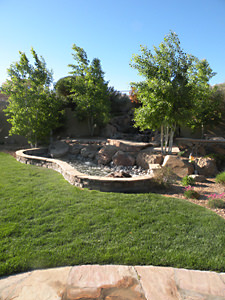
Pergula Work
A pergola is a garden feature forming a shaded walk or passageway of pillars that support cross-beams and a sturdy open lattice, upon which woody vines are trained. As a type of gazebo, it may also be an extension of a building, as protection for an open terrace or a link between pavilions.
The origin of the word is the Late Latin pergula, referring to a projecting eave. The English term was borrowed from Italian. It was mentioned in an Italian context in 1645, by John Evelyn at the cloister of Trinità dei Monti in Rome and used by him in an English context in 1654, when, in the company of the Earl of Pembroke, Evelyn watched the coursing of hares from a “pergola” built on the downs near Salisbury for that purpose. Pergolas may link pavilions, may extend from a building’s door to an open garden feature such as an isolated terrace or pool, or may be entirely free-standing structures providing shelter and shade to a length of walkway.
Modern pergola designs tend to favor wood over stone structures, and are thus more affordable and increasing in popularity.
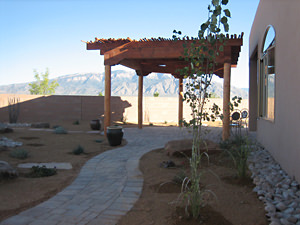
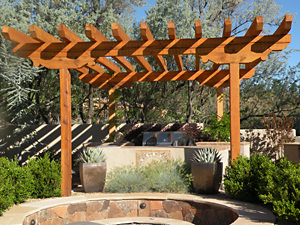
Concrete Work
Concrete is a construction material composed of cement (commonly Portland cement) and other cementitious materials such as fly ash and slag cement, aggregate (generally a coarse aggregate made of gravels or crushed rocks such as limestone, or granite, plus a fine aggregate such as sand), water, and chemical admixtures. The word concrete comes from the Latin word “concretus” (meaning compact or condensed), the past participle of “concresco”, from “com-” (together) and “cresco” (to grow).
Concrete solidifies and hardens after mixing with water and placement due to a chemical process known as hydration. The water reacts with the cement, which bonds the other components together, eventually creating a stone-like material. Concrete is used to make pavements, pipe, architectural structures, foundations, motorways/roads, bridges/overpasses, parking structures, brick/block walls and footings for gates, fences and poles. Concrete is used more than any other man-made material in the world.
For many admirers of decorative concrete, the best attribute is that each installation is totally unique. Concrete can assume nearly any shape, design, pattern or texture. But the one characteristic that most distinguishes decorative concrete is color, whether used subtly to blend with nature or boldly to make a dramatic design statement.
Frankly, unless you’re a purist and prefer concrete in its plain-gray state, there’s no reason not to enhance it with color. The number of different products for coloring concrete has never been greater, and many manufacturers offer an extensive palette of shades to choose from for colored concrete . And although you’ll pay more for colored concrete, the amazing transformation will be well worth the investment. In the hands of a creative contractor, these coloring mediums permit an endless array of decorative effects, from rustic earth-toned sidewalks and patios that harmonize with the surrounding landscape to vibrant multicolored floors that double as works of art.
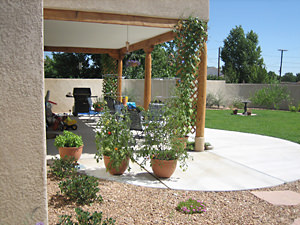
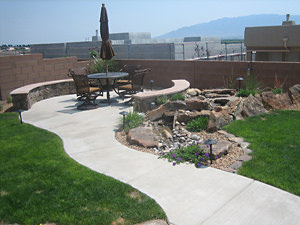
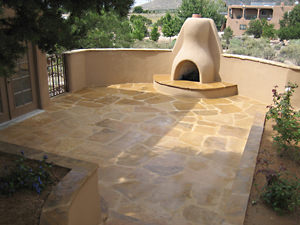
Water Feature Work
In landscape architecture and garden design, a water feature is one or more items from a range of fountains, pools, ponds, cascades, waterfalls, and streams. Before the eighteenth century they were usually powered by gravity, though the famous Hanging Gardens of Babylon are believed to have been supplied by an Archimedean screw. Other examples were supplied with water using hydraulic rams. Since the 18th century, the majority of water features have been powered by pumps. The power source was sometimes a steam engine, but in modern gardens it is almost always electricity. There is an increasing range of innovative designs as the market becomes more established and people become more aware of the advantages of using solar power. These advantages include environmental benefits, no mains electricity in the garden, and free energy.
Modern water features are often self-contained, meaning that they do not require water to be plumbed in; water is recycled from a hidden reservoir, also known as a sump. The sump can either be contained within the water feature, or buried underground (in the case of an outdoor water feature). A water feature may be indoor or outdoor and can be any size, from a desk top water fountain to a large indoor waterfall that covers an entire wall in a large commercial building, and can be made from any number of materials, including stone, granite, stainless steel, resin, and glass.
Water gardens, also known as aquatic gardens, backyard ponds and garden ponds, usually referring to a human-made feature, typically combine a pool with aquatic plants and often ornamental fish. Fixed items such as rocks, fountains, statuary, waterfalls and watercourses can be combined with the pool to add visual interest and integration with the local landscape and environment.
Backyard waterfalls come in all shapes and sizes and make for emphatic focal points. When mulling over your design options, the main consideration is how to achieve the necessary height for the waterfall.
Water features in the landscape are the perfect way to create a soothing oasis of sights and sounds. The tinkle of water splashing on rocks and the flash of sunlight as it reflects from a bubbling fountain are just a few of the joys a backyard water feature can bring.
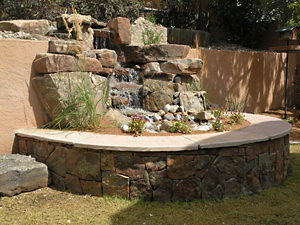
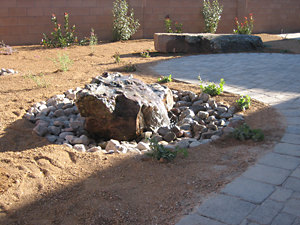
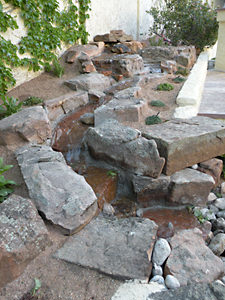
Retaining & Boundary Wall Work
A retaining wall is a structure designed and constructed to resist the lateral pressure of soil when there is a desired change in ground elevation that exceeds the angle of repose of the soil. The active pressure increases on the retaining wall proportionally from zero at the upper grade level to a maximum value at the lowest depth of the wall. The total pressure or thrust may be assumed to be acting through the centroid of the triangular distribution pattern, one-third above the base of the wall.
Retaining walls serve to retain the lateral pressure of soil. The basement wall is thus one form of retaining wall. However, the term is most often used to refer to a cantilever retaining wall, which is a freestanding structure without lateral support at its top.
Typically retaining walls are cantilevered from a footing extending up beyond the grade on one side and retaining a higher level grade on the opposite side. The walls must resist the lateral pressures generated by loose soils or, in some cases, water pressures.
Boundary walls include privacy walls, boundary-marking walls on property, and town walls. These intergrade into fences; the conventional differentiation is that a fence is of minimal thickness and often is open in nature, while a wall is usually more than a nominal thickness and is completely closed, or opaque. More to the point, if an exterior structure is made of wood or wire, it is generally referred to as a fence, while if it is made of masonry, it is considered a wall.
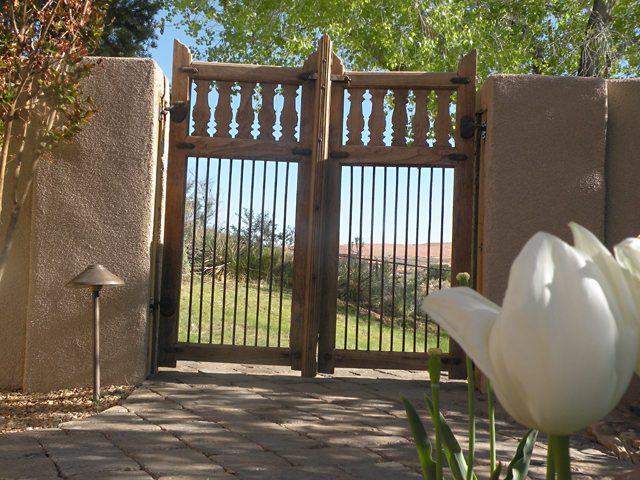
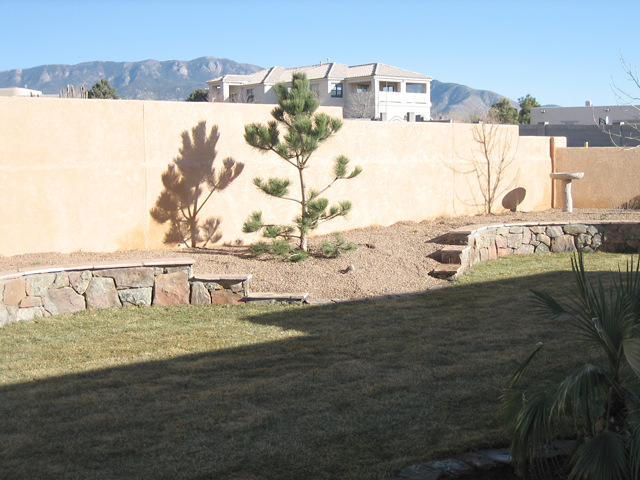
Boulder Work
Within the last 10 years there has been a great shift in landscaping trends. Out are straight lines and perfectly manipulated hedges. In, are flowing curves and plants allowed to grow into their natural shapes. It is true that often the architecture of the home, or desires of the homeowner, will call for formal structure, but more homeowners today want a relaxed look and low maintenance.
Boulders exemplify the natural garden and add a wild texture, color and form to the landscape. Using boulders in landscape architecture is a technique originally employed by observing how the Japanese and Chinese construct their gardens. They in fact perfected the use of rock and boulders – therefore making it a landscape art-form.
By strategically placing these moss-covered or granite boulders in an arrangement, we may view the groupings as pleasing to look at, while one trained in oriental design will see an island in a tranquil sea. The idea is to duplicate a piece of nature with boulders – therefore the symbolism.
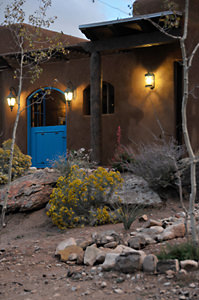
Fireplace Work
Nothing brings a more comfortable atmosphere to a home than having a fireplace. As a matter of fact, many people are sure to include one, either when they are building a new home or if they are redesigning a house in order to better suit their needs. Just because you are putting a fireplace in your home, however, does not necessarily mean that you need to conform to what everybody else’s idea of a fireplace is. Fireplace design is really an area where you have a lot of different directions that you can go, each of which will add something unique to your home.
Although there are a lot of choices whenever it comes to fireplace designs, two of the main choices that you’re going to have to decide from are whether you are going to have a wood burning fireplace or one that is fueled by another source, such as natural gas. Either of these can really give you an authentic look, but each of them has good and bad things to take into consideration.
For example, a wood burning fireplace is going to make your house smell a little bit smoky in most cases, while a gas burning fireplace is not going to throw off any kind of scent at all. If you enjoy the smell of wood burning, there really is no substitute for this type of fireplace. On the other hand, a gas burning fireplace is very clean and convenient.
Another thing that needs to be taken into consideration is whether you’re going to go with a more traditional look or with a contemporary look in your fireplace design. You really have to think about what you’re going to do with the rest of your home and the area that is directly surrounding where the fireplace is going to reside.
A traditional fireplace design is going to fit into almost any environment, but there may be times whenever you need to do something a little bit more contemporary. The only thing that you really need to be concerned about with a contemporary fireplace design is whether it is going to fit into the room for the long term. The last thing that you want to do is to get locked into a particular contemporary look which is not going to be easily changed, should it happen to go out of style.
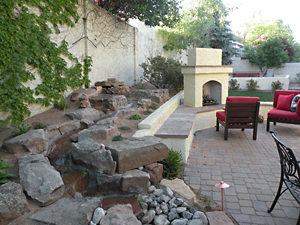
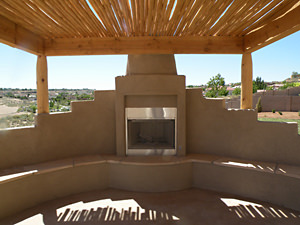
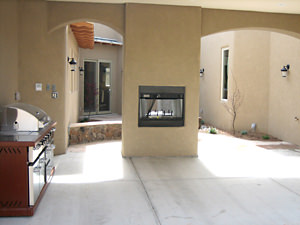
Outdoor Kitchen & BBQ Area Work
A barbecue grill is a device for cooking food by applying heat directly from below. There are several varieties of such grills, with most falling into one of two categories: gas-fueled and charcoal. There is a great debate over the merits of charcoal or gas for use as the cooking method between barbecue grillers. Barbecuing is a pervasive tradition in much of the world. Almost all competition grillers use charcoal, most often in large, custom designed brick or steel grills. They can range from a few 55 gallon oil drums sawed lengthwise on their sides to make a lid and grill base, to large, vehicle sized grills made of brick, weighing nearly a ton.
Kitchens are the undisputed heart of the home, where everyone gathers, mingles, and lingers during parties. But to achieve that kind of appeal outside means expanding your outdoor living space. To draw a crowd—and keep them entertained—requires a bit more than plopping down a table and a few plastic chairs.
With an outdoor kitchen you can prepare meals and be around your guests with minimal time spent running back inside for plates, beverages, or tongs. Although you could spend tens of thousands of dollars for a custom outdoor kitchen, a basic island is an efficient design that leaves out the complexity of curves and angles. Not only that, with an island guests can relax on one side while you’re cooking on the other, so you feel as though you’re part of the gathering.
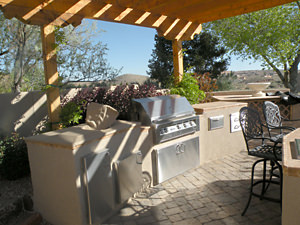
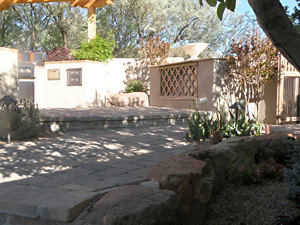
Gate Work
A gate is a point of entry to a space enclosed by walls, or a moderately sized opening in a fence. Gates may prevent or control entry or exit, or they may be merely decorative. Other terms for gate include yett and port.
A garden gate or side gate is often intended to protect certain areas, to keep kids or pets out of trouble, for keeping away possible intruders, or simply for privacy. However, garden gates also give the first impression to people visiting your home and is thus an important element for the home improvement buff to consider. With a little bit of creativity a garden gate can make even a rather ordinary fence stand out from the crowd.



